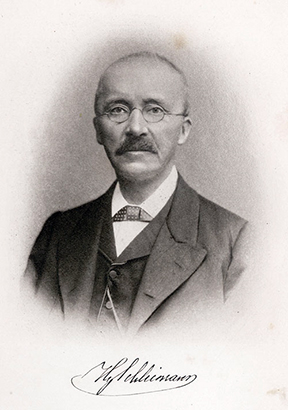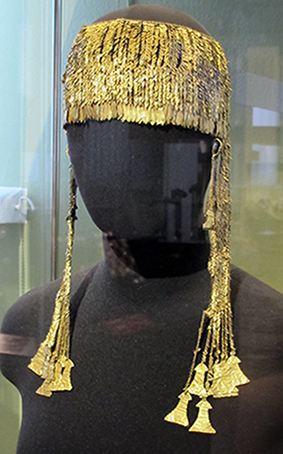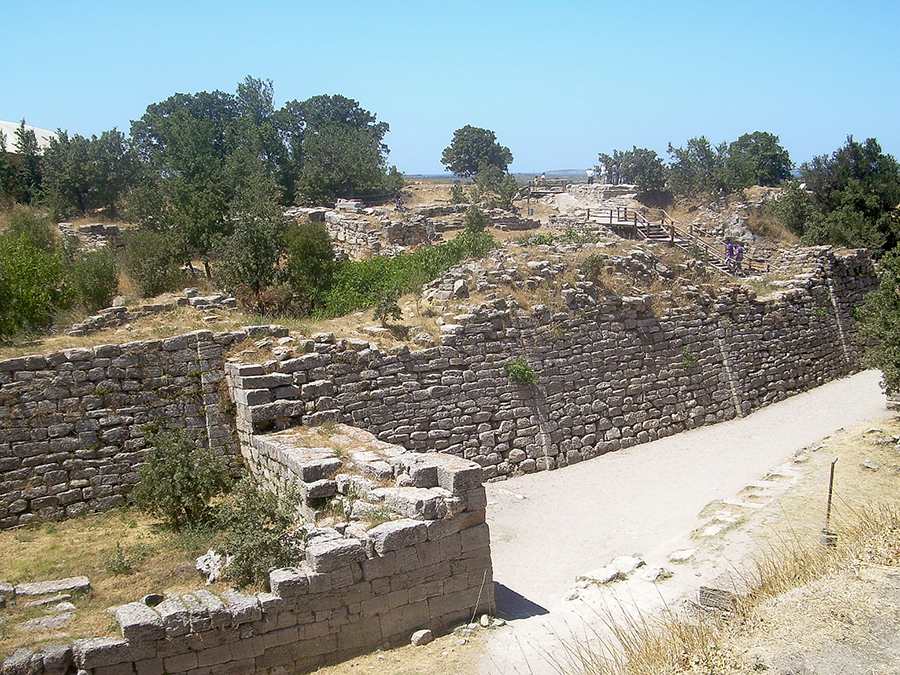HEINRICH SCHLIEMANN
AND TROY

Heinrich Schliemann (1822-1890)
The German archaeologist and excavator Heinrich Schliemann (1822-1890) undertook a preliminary excavation at Hisarlik, the site of ancient Troy in north-western Turkey, in April 1870. After he had dug down for 16 feet, ancient walls began to appear. With the permission of the Turkish authorities, a full-scale excavation was begun the following year. In May 1871, while digging near a great gateway, at the foot of the wall was found a "large copper article of the most remarkable form...with gold glimmering beneath it." After a lunch break, Schliemann "cut out the treasure with a large knife." Schliemann called his find the Priam's Treasure after Priam, the king of Troy during the decade-long siege.

Part of Priam's Treasure.
His Athenian-born wife, Sophia, helped him to gather up the jewels, bars, tools, weapons and vessels of gold, silver and bronze. Later, she posed for a photograph wearing some of the gold jewelry, which Schliemann described as the "jewels of Helen".
 
Sophia Schliemann (1852–1932) wearing a gold headdress from the "Treasure of Priam"
The large diadem with pendants on the right is today in the Pushkin Museum, Moscow
Despite an alleged agreement with the Turkish government that all finds would be equally divided, Schliemann kept the treasure intact. The ensuing lawsuit brought by the Turkish authorities delayed the renewal of digging at Troy. In the meantime, Schliemann turned his attention to Mycenae

The walls of the acropolis of Troy VII
© Christopher L. C. E. Witcombe
|

 SPRING 2016
SPRING 2016  SCHEDULE
SCHEDULE  REQUIREMENTS
REQUIREMENTS

 SPRING 2016
SPRING 2016  SCHEDULE
SCHEDULE  REQUIREMENTS
REQUIREMENTS